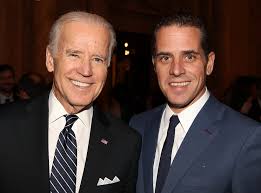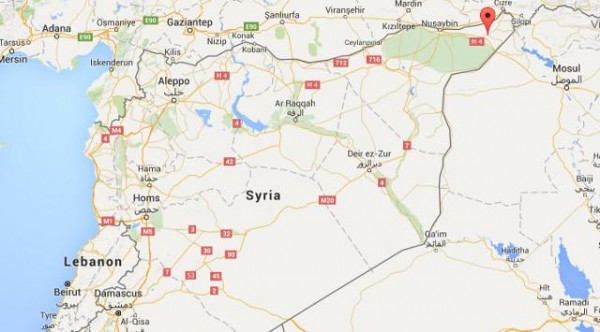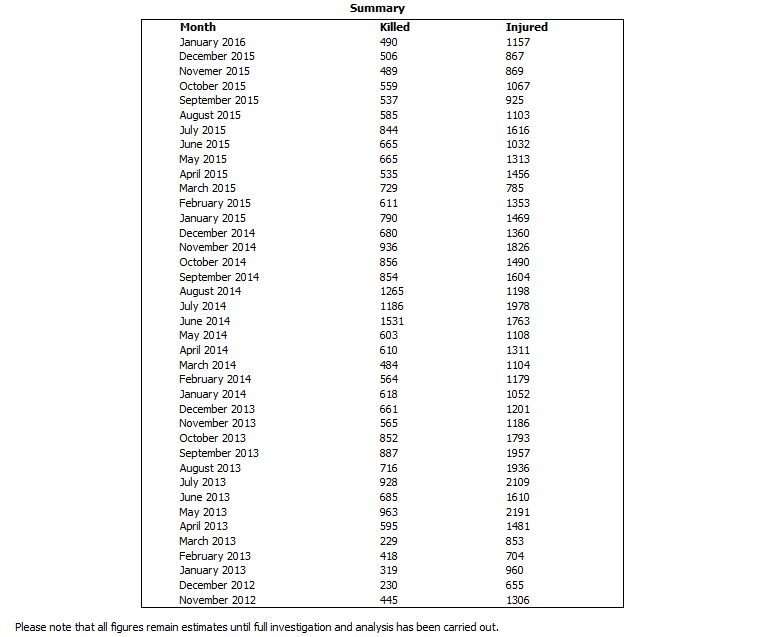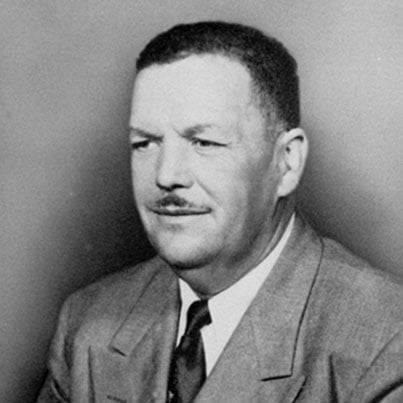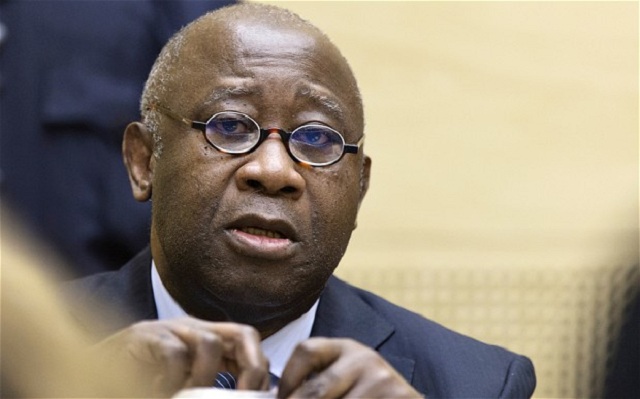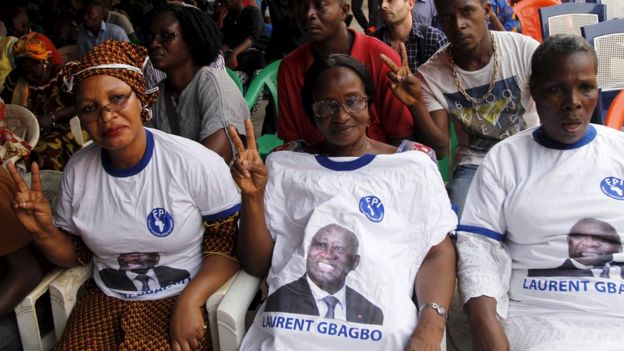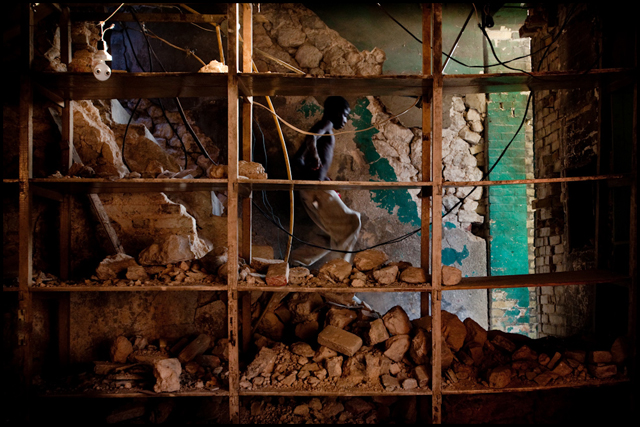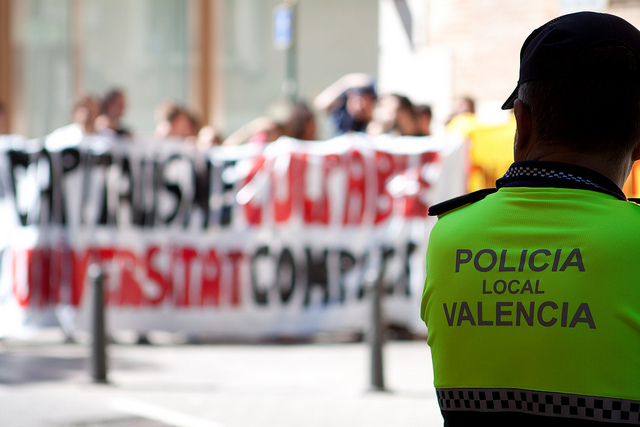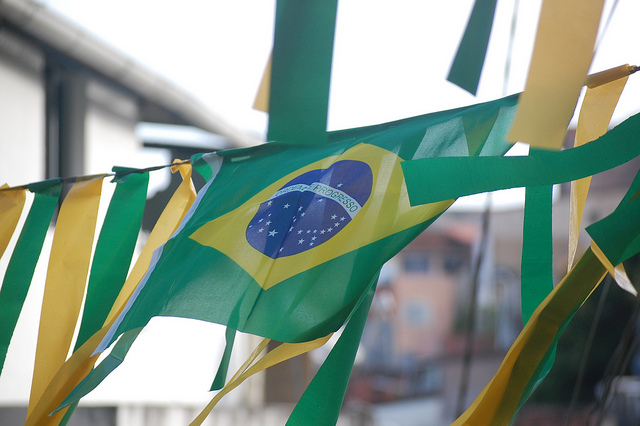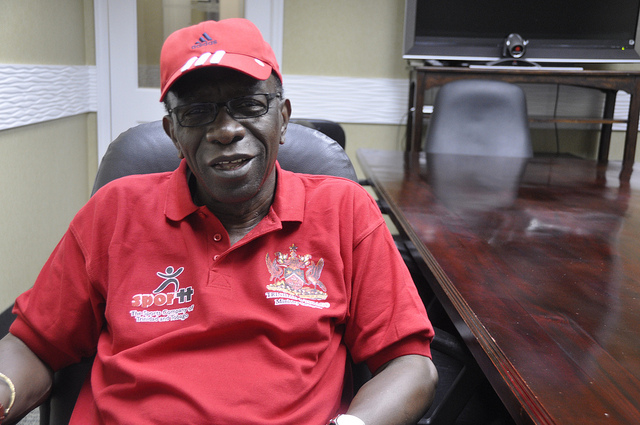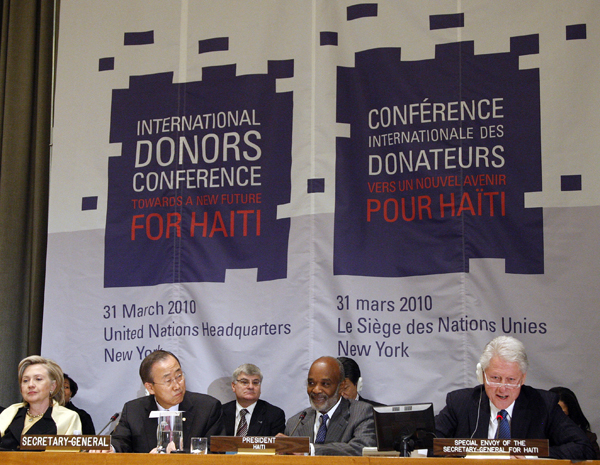Featured image: Vandana Shiva
While Mahatma Gandhi is best remembered for his campaign to end British colonialism a half-century ago, the greater part of his life’s work was devoted to renewing India’s vitality and regenerating its culture from the ground up. He was a tireless champion of what he called swadeshi, or local self-sufficiency. He felt that the soul of India was contained in the village community and that the freedom of the Indian people could only be achieved by creating a confederation of self-governing, self-reliant, self-employed people living in villages and deriving their right livelihood from the products of their homesteads.
As history would have it, Gandhi’s ideas were widely ignored following India’s independence, especially his teaching of frugality and resource conservation. Like many nations in the developing world, India flirted for a time with socialism but then abandoned it in favor of Western-style market reforms. Today all the mainstream political parties in India are committed to a high-tech future, one that will most likely bring short-term economic prosperity to some Indians but not without long-term social and environmental consequences.
But there is a growing movement underway to reclaim Gandhi’s ideas. More and more people, in India and elsewhere, are beginning to question the value of free-market reforms and deregulation. As they see it, the push toward economic globalization has had a host of negative outcomes, from deepening economic disparities and overcrowded cities to ecological destruction and the flattening of local traditions and cultures.
One of the most prominent of Gandhi’s intellectual heirs is Vandana Shiva, a physicist and philosopher of science by training who has developed a considerable reputation as a champion of sustainability, self-determination, women’s rights, and environmental justice. She has written more than a dozen books, including Monocultures of the Mind, Staying Alive: Women, Ecology and Development, and Biopiracy. She is also well-known in India for her grassroots efforts to preserve forests, organize women’s networks, and protect local biodiversity.
Vandana Shiva is the director of the Research Foundation for Science, Technology, and Natural Resource Policy in Dehra Dun. She is the recipient of numerous awards and prizes, including the 1998 Alfonso Comin award and the 1993 Right Livelihood Award, also known as the Alternative Nobel Prize. David Brower, the late environmentalist, once said that Shiva would be his choice for world president, if there were such a thing.
*
Scott London: You were trained as a physicist and philosopher of science. How did it happen that you branched out into environmental activism, women’s issues, and the problems of the global economy?
Vandana Shiva: I did physics because of my love of nature. As a young student of science, I was taught that physics was the way to learn nature. So my travels through physics really are the same urges that make me travel through ecology. They are not really different, except that there is an added dimension of seeing ecological destruction and seeing the very life-support system that makes us survive on this planet being destroyed. That makes me do more than just inquire; it compels me to act and to intervene.
I’m a woman, born the daughter of a feminist and the granddaughter of a feminist grandfather. I don’t think I could have avoided working on women’s issues. I don’t do it as a career or profession; it’s my very essence as a human being. When I find too many puzzles about the way explanations are given about why there is inequality — why people who work the hardest in the world end up being the poorest — I can’t just sit back and not try to understand why the gaps between people are increasing, or why there are so many homeless and hungry people in the world. To me, all these issues — of justice, of ecology, of a scientific inquiry into nature through physics — come from the same source. In a sense, I haven’t really moved; I’ve travelled the same road.
London: Isn’t it somewhat unusual for an Indian woman to be interested in physics and to pursue a doctorate in the field?
Shiva: I was unusual. In fact, I still can’t figure out what inspired me to do physics. But since I was nine or ten years old, I wanted to be like Einstein. He was my hero. I knew no physicists. I knew no scientists. I had nobody around me. And I went to a convent that didn’t even have higher mathematics and physics. I taught myself these subjects in order to get into university.
But given that I was interested in physics, I think it was easier for me to do physics in India. I think the structures of exclusion are more systematically built up in American society, for example, so that young girls interested in science eventually lose their confidence over time. The structures of exclusion work against them. We have other structures of exclusion in India, but not around modern scientific knowledge. So, if you can make it, nobody stops you because nobody defines it as something women shouldn’t be doing. In a way, there are more mathematicians, more doctors, more scientists in India than there are in this country. We even had a woman head of state, and that’s something the United States has yet to catch up with.
London: [Laughs] That’s right. So, after getting your master’s degree in physics, you went on to earn a doctorate in the philosophy of science.
Shiva: Yes. I started out in nuclear physics. But after I became more sensitized to the environmental and health implications of the nuclear system — I was being trained to be the first women in the fast-breeder reactor in India (and was in it when it first went critical) — I didn’t feel comfortable with it. So I went into theoretical physics.
I did my masters in elementary particles. But the foundations of elementary particles is quantum theory and there were too many conceptual problems around quantum theory that I couldn’t live with. So I decided I was going to work on the foundations of quantum theory. That’s what I did my Ph.D on.
The only place it was offered as a program was at the University of Western Ontario. The university collected mathematicians, physicists, philosophers, logicians from across the world. So I was part of this amazing department at its most exciting peak, in what were probably the five or six most glorious years in the foundations of quantum theory work.
I didn’t leave physics because of boredom. I left it because other issues compelled me in a bigger way. And I always say to myself, “When I’m 60, I’d like to go back to what I interrupted.”
London: What were some of the hot issues that compelled you in those early days?
Shiva: The first issue that compelled me was a very strange split between India being highly development scientifically (we were the third biggest scientific manpower in the world then) and yet at the same time struggling with amazing poverty. The linear equation that says that modern science equals progress and the reduction of poverty did not apply to India. It wasn’t working. Something was wrong. So understanding the social context of science and technology started to become one of my imperatives.
The other issue was the disappearance of the Himalayan forest where I had grown up. There was a movement blossoming called the Chipko movement. Peasant women were coming out and embracing trees to prevent logging. My father had been a forester and I had grown up on those hills. I had seen forests and streams disappear. I jumped into this movement and started to work with the peasant women. I learned from them about what forests mean for a rural woman in India in terms of firewood and fodder and medicinal plants and rich knowledge.
My father who was a scientifically trained forester knew something about the forest. But it became clear to me that these women knew much more about the local diversity than any trained forester could. They knew about every nook and corner of their local ecosystem. So I learned from them, and I worked for them, writing their reports and counter-reports.
That’s what made me leave university teaching and start an institute called the Research Foundation for Science, Technology and Active Resource Policy. It’s a very big name for a very humble objective — to put research at the service not just of the rich and powerful in society, or of government and the private sector, but also of grassroots movements.
I saw brilliant ideas coming out of the movement that needed better articulation, that needed elaboration and systematic analysis. I just followed that and it’s been very exciting.
London: You’ve said that the most critical issue confronting the world today is a dual one: the need for ecological sustainability, on the one hand, and social justice on the other. Many people, especially here in the United States, see these issues as separate and unrelated. But for you they are inextricably linked.
Shiva: Yes, for me the two are very closely linked, in part because my view of ecology comes from the margins of Indian society, from the agricultural producers who make up 70 percent of India — people who are dependent on natural resources, on biodiversity, on the land, the forests, the water. Nature is their means of production. So for them ecological destruction is a form of injustice. When the forest is destroyed, when the river is dammed, when the biodiversity is stolen, when fields are waterlogged or turned saline because of economic activities, it is a question of survival for these people. So our environmental movements have been justice movements.
I think the reason it doesn’t appear that way in the North American setting has a lot to do with the history of this country. The occupation of America (and Columbus’s arrival quite clearly was an occupation, no one can deny that) meant that the entire history of the Native Americans was rendered invisible. The land could only be occupied if it was first defined as empty. So it was defined as a wilderness, even though it had been used by native people for millennia.
So historically nature has been defined as wilderness. Later, when the wilderness movement emerged, it emerged separate from the issue of social inequality and the economic problems of survival. It was a preservationist ecology movement created by an occupying culture. Clearly, a wilderness movement started by Native Americans would not have had the same roots.
So today the environmental movement has become opposed to issues of justice. You can see this in the way issues are framed. It’s a permanent replay of jobs-versus-the-environment, in nature-versus-bread. These are extremely artificial dichotomies.
I think we have reached a stage now where we need to find solutions to economic injustice in the same place and in the same ways that we find solutions to sustainability. Sustainability on environmental grounds and justice in terms of everyone having a place in the production and consumption system — these are two aspects of the same issue. They have been artificially separated and have to be put back again in the Western way of thinking.
London: It’s interesting to me that even though you were trained as a scientist and schooled in a distinctly Western intellectual tradition, you represent a very different worldview.
Shiva: Well, my training in science is actually one that is very critical of mechanistic science. I was trained in quantum theory which emerged at the turn of the last century. We are a whole century behind in absorbing the leaps that quantum theory made for the human mind. For example, the idea that objects have properties out there in fixed ways is an incorrect idea about the world. Properties are created through relationships and processes. They are not inherent in electrons or photons or quanta any more than they are inherent in soil or trees or people. So my critique of reductionistic science is a critique that I have inherited from my scientific training. But it has been deepened by my experiences as an ecologist, in seeing the ecological destruction taking place today.
My reading of this, basically, is that our dominant structures of science have been extremely good at manipulating objects for single functions and for external objectives. So, for example, if you want a cow to be not just a cow but a milk machine, you can do a very good job at that by creating new hormones like the Bovine Growth Hormone. It might make the cow very ill, it might turn it into a drug addict, and it might even create consumer scares about the health and safety aspects of the milk. But we’ve gotten so used to manipulating objects and organisms and ecosystems for a single objective that we ignore the costs involved. I call this the “monoculture of the mind.” Seen from a monocultural perspective, manipulating objects is very, very clever. But seen from a multidimensional perspective, from a perspective of diversity, this is extremely crude because what we have lost out on is a cow that serves as a source of sustainable energy.
In India, crossbreeding programs aimed at mimicking the milk yields of Western cows like the Jerseys and the Holsteins actually breed out the capacity of our animals to pull ploughs and pulley-cars. So, thanks to cross-breeding programs, we now have humpless cattle with no stamina. If you see cattle as a source of organic manure, animal energy, as well as milk products, then Indian cattle are not inferior. It is only when you measure them as milk machines that they become inferior. What if we measured the dairy cows of America or Jersey or the Swiss Alps in terms of their work functions? They would be terribly inferior.
So a single, one-dimensional way of thinking has created a monoculture of the mind. And the monoculture of the mind has become a self-fulfilling prophecy. This is the root of why we have pitted equity against ecology and sustainability against justice.
London: We’ve tended to justify these monocultures in the name of growth and human development.
Shiva: When you take the entire system into account, ways of developing more of something in one dimension can actually create scarcities in another. If we say we have to increase production because people need more food, more housing, more meat, or more milk, we can make one thing grow in a certain way. But by doing that we create externalities so that there are scarcities in other related things. So, for example, there are scarcities in drinking water when you pollute the groundwater with nitrates. There is a scarcity in diversity when you create huge cornfields with the same strain of corn so that when one disease strikes — which happened in the United States in the 70s — all the cornfields in the country are wiped out. That was the first time the U.S. realized the value of diversity in agriculture and began to discuss genetic resources and their conservation.
The system of technological production that we have today has been justified in terms of creating more goods to feed more people and to meet more needs. But it actually destroys more of the resources that we need in order to meet those multiple needs. If we shift to an ecological perception, a diversity perception, we realize that some of the instruments of which we are very proud are actually extremely primitive for dealing with nature. To me that is the great lesson of ecological awareness at the turn of the millennium.
London: You have spoken out against the patenting of plants and herbs, something the pharmaceutical industry has been pursuing very aggressively in recent years.
Shiva: Yes, it’s a phenomenon that started in the United States in which corporations make claims on the life forms, biodiversity and innovations of other cultures by applying for patents on them. For example, pesticides made from the neem tree in India are patented. There is now a patent restricting the use of an herb called philantis neruri for curing jaundice. An even more blatant example is the use of turmeric for healing wounds, which is something every mother and grandmother does in every home in India. Now the Mississippi Medical Center claims to have “invented” the capacity of turmeric to heal wounds.
London: You describe a dramatic case in which some American researchers traveled to India and basically co-opted time-honored and widely known folk-remedies for purely commercial purposes.
Shiva: Absolutely. I have called this phenomenon of stealing common knowledge and indigenous science “biopiracy” and “intellectual piracy.” According to patent systems we shouldn’t be able to patent what exists as “prior art.” But the United States patent system is somewhat perverted. First of all, it does not treat the prior art of other societies as “prior art.” Therefore anyone from the United States can travel to another country, find out about the use of a medicinal plant, or find a seed that farmers use, come back here, claim it as an invention or an innovation, take a patent on it, and grab an exclusive right to the use of the products or processes that are linked to that knowledge.
London: Do any other examples come to mind?
Shiva: I’ve just been told that Nestle has taken out patents on the making of pullao. (Pullao is the way we make our rice in India, with either vegetables or meat or whatever.) Before you know it, every common use of plants will be patented by a Western corporation.
To me, this is an absolute outrage. It’s worse than slave trade because what is being traded is the very knowledge that makes survival possible for 80 percent of the people of this world. These 80 percent live on the biodiversity and the knowledge they have evolved as part of a rich collective heritage involving the use of seeds for growing crops and medicinal plants for healing.
The statement that this kind of piracy is an “invention” is a bit like the statement that Columbus was the first to “discover” this country. In fact, this country was “discovered” over millennia by the Native Americans.
The enclosure of the biological and intellectual commons in this way is a real threat to the future of people everywhere because it creates a situation where common practices that have been part of people’s lives for generations become monopolies of a handful of pharmaceutical, agribusiness and agrichemical corporations. People then become incapable of looking after their own needs. Every farmer must go to the seed industry every year to buy their seed and pay an 80 percent royalty to a corporation. This is already happening in this country. Over-the-fence exchanges have started to be treated as crimes. Or, if you need a biological pest control, you can no longer use the need seed in your back yard. Instead you have to depend on the Grace Corporation or some other entity. That kind of dependency basically leads to increased poverty and increased ecological destruction.
London: How do you and the women that you work with counter this?
Shiva: We have a multi-levelled program of resistance. The first step is challenging it as a moral and ethical issue — in the same way as slave trade was challenged on the grounds that it’s unethical to trade people. You can’t pirate knowledge; it’s illegitimate, and shouldn’t be done.
The second step is to develop methods of rejuvenating people’s knowledge, of making sure that people regain confidence in their own knowledge so that biodiversity and knowledge is kept in the common domain.
The third involves working on legal alternatives. One of the movements we have developed is to say that, just as intellectual property rights protect the inventions of individuals, common rights are needed to protect the common intellectual heritage of indigenous peoples. These are rights that are recognized through the Convention on Biological Diversity. We are working to make sure that they become foundations of our jurisprudence.
It’s not very easy because every second day we are threatened, as a country, by the United States Foreign Trade Act. It has a clause in it called Special 301 which says that if India or another country doesn’t have laws like those in the United States which allow these monopolies to grow, then there will be a trade retaliation.
So we have to build movements in the face of trade retaliation on the basis of people’s democratic rights, on the basis of an ancient heritage of collective innovation. We work from the grassroots all the way to the national government and the World Trade Organization. It basically means being very multidimensional in our campaigns. And that is where part of the fun is. It involves both resistance and creativity. It involves constructive action, while at the same time saying “no.”
London: The emphasis on peaceful non-cooperation has a lot in common with Gandhi’s approach to social change.
Shiva: Well, in fact, when we first started out, we called it the seed satyagraha. As you know, Gandhi had started the independence movement with the salt satyagraha. Satyagraha means “struggle for truth.” The salt satyagraha was a direct action of non-cooperation. When the British tried to create salt monopolies, he went to the beach in Dindi, picked up the salt and said, “Nature has given us this for free, it was meant to sustain us, we will not allow it to become a monopoly to finance the Imperial Army.”
We’ve done exactly the same kinds of actions around biodiversity and seed. Nature has gifted this rich biological diversity to us. We will not allow it to become the monopoly of a handful of corporations. We will keep it as the basis of our wealth and our sustenance.
For us, not cooperating in the monopoly regimes of intellectual property rights and patents and biodiversity — saying “no” to patents on life, and developing intellectual ideas of resistance — is very much a continuation of Gandhian satyagraha. It is, for me, keeping life free in its diversity. That is the satyagraha for the next millennium. It is what the ecology movement must engage in, not just in India, but in the United States as well. People who believe in the freedom of ideas must engage in this wherever they are.
London: You quote Gandhi as saying, “In the resistance is built the creative construction of an alternative.” So putting up resistance is not just an act of saying “no,” I take it. It’s also part of a very constructive effort to find a better alternative.
Shiva: Yes. We always draw lessons from the independence movement. Gandhi did not merely say “no” to the imported textile that was destroying our textile industry; he put everyone to work spinning cloth. The spinning wheel became the symbol of Indian independence. So we always say, “if the spinning wheel was the symbol of our first independence, then the seed is the symbol of our second independence.”
London: The most urgent ecological issue facing the planet today, by many accounts, is overpopulation. The issue is often framed, particularly here in the West, as a “third world problem” since the birthrate is highest in poor countries. What is your perspective?
Shiva: The people who see the population explosion in the Malthusian way — as a geometric progression — forget that population growth is not a biological issue. People are not increasing in numbers out of stupidity and ignorance. Population growth is an ecological phenomenon linked very intimately to other issues, such as the usurpation of the resources which allow people to live.
In England, the population explosion can be linked very clearly with the enclosure of the commons that uprooted the peasants from their land. In India, it was the same thing: the population increased at the end of the 18th century when the British took over and Indian lands were colonized. Instead of the land feeding Indian people it started to feed the British empire. So we had destitution. Destitute people who don’t have their own land to feed themselves can only feed themselves by having larger numbers, therefore they multiply. It’s the rational response of a dispossessed people.
The population explosion is an ecological phenomenon of displacement. Unless we solve that ecological problem of displacing people – to build huge dams, to build motorways, to take away what people need in order to survive — we will keep pumping more and more money into population programs. We will have more and more coercive and violent methods through which women’s bodies are treated as experimental grounds for new contraceptives. Yet we will not have a solution to the problem of numbers.
London: How do we address the problem?
Shiva: The problem of numbers can only be dealt with by recognizing that people have a fundamental right to economic security. If you provide them with economic and environmental security, the population will stabilize itself. The example of Kerala shows this very clearly. Kerala is a state in south India in which the trends are the absolute opposite from the rest of the third world and from the rest of India. There are two or three reasons. There is tremendous equality between genders in Kerala. Also, there has been a very strong land reform program in the state so that even the poorest of people own the plot of land on which their hut is built. For example, landless laborers might not own the land on which they do their agricultural work, but they own the land on which they have their hut. That resource-guarantee has tremendous implications for the security of the people.
When I was in the capital of Kerala state, I remember some rich people telling me, “You can’t get the maids to come every day out here. They have a house and don’t need to work every day because if they stay home they won’t starve.”
That is where the population control issue needs to be addressed. Population control is not an issue involving contraceptives for third world women. It is an issue of ecological justice.
London: Do you have any great role-models?
Shiva: A I told you earlier, Einstein quite clearly was a big role model. Now there are all kinds of rumors that he played the fool with women and was very nasty with his wife, and maybe if I had known all that, he wouldn’t have been such a hero.
I do sculpting sometimes when I have the time, and the first thing I sculpted was a bust of Einstein. It still sits on my table and still inspires me. He was a person who triggered my imagination and my ideas.
Gandhi is the other person. I believe Gandhi is the only person who knew about real democracy — not democracy as the right to go and buy what you want, but democracy as the responsibility to be accountable to everyone around you. Democracy begins with freedom from hunger, freedom from unemployment, freedom from fear, and freedom from hatred. To me, those are the real freedoms on the basis of which good human societies are based.
The women of Chipko and people like Sunderlal Bahaguna who have been part of Chipko have also been tremendous role models for me. Having worked for years and years on environmental issues, there are a handful of creative people across the world who constantly inspire in their interactions — which is what makes this kind of work inspiring. It makes it worthwhile to leave home and travel all the way to California, to be with the people in the Forum on International Globalization (Edward Goldsmith, Jerry Mander, and others), people of creativity, integrity, and deep fearlessness. There are plenty of people in the world who inspire me.
London: Are you hopeful as you look toward the future?
Shiva: I’m absolutely confident that things will change. I believe that we will see a lot of destruction, but I believe that if we can see the right patterns and draw the right lessons from that destruction, we might be able to rebuild before it’s too late. And then I have that ultimate optimism that even if we can’t, life will rebuild itself. In a way, the global economy might collapse, but Gaia won’t, and people’s ingenuity won’t. We will rebuild society, we will rebuild local economies, we will rebuild human aspirations. The kind of global monoculture in which everyone feels as if they have to run faster than they are running to stay in the same place cannot continue. I think we will become disenchanted with the glamour of globalization.
This interview was adapted from the public radio series “Insight & Outlook.” It’s also available in a Portuguese translation by Mário Sérgio Mieli (PDF).
